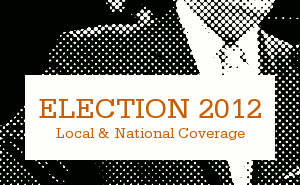At this time of year many of us add to our personal debt, pulling out that plastic to purchase holiday gifts. State officials are also thinking about adding to Pennsylvania’s debt as lawmakers work through the 2011-2012 capital budget. They won’t boost the debt by using a credit card, but rather through borrowing for capital projects by floating bonds.
Pennsylvania has a Double A bond rating, the second highest possible. But the question lingers: is it a good time to borrow?
Pennsylvania’s unemployment rate, although lower than the national average, continues to hover around 8 percent. The 2011-12 operating budget passed this summer totaled $27.15 billion, about $2 billion less than the previous year due to the expiration of federal stimulus funds. Revenues are up 4.2 percent compared to a year ago, with personal income and sales tax collections higher, but corporate tax revenues are down. Still, for the first six months of this fiscal year, revenues are off $500 million from Corbett Administration estimates.
The debt service cost — the amount that goes to paying off the long-term loans — is about $1.2 billion, or about 4.4 percent of the operating budget.
“When you start to climb from 2 or 3 percent of your general operating fund going to service debt, to 5 or 6 or 7 percent of your fund, you’re doing two things,” said Pennsylvania Treasurer Rob McCord. “Your cost of debt could go up, but the second thing is, you’re crowding out your ability to invest in things, whether that be education, culture, economic development, etc.”
Would More Debt Be Bad?
The treasurer believes that debt is not always good or always bad. “It’s only a good time for borrowing if you’re borrowing for the right things,” McCord said. “I believe we should reform our budget process so that we start borrowing with a hierarchy in mind, where we’re able to show first the probability of being able to pay it off in a way that won’t increase general tax rates.”
McCord said that the right time to add debt is when the cost of loans is low; that the state is investing in projects that either yield a high return rate; or, the needs are unavoidable. “In other words, ‘you’ve got a hole in your roof and you need to fix it before winter comes’ kind of challenges, and we clearly have a ton of those in Pennsylvania,” McCord said.
The commonwealth has outstanding debt of $9.8 billion and long-term lease obligations of $2.1 billion. According to Moody’s Investors Service, Pennsylvania owes about $950 per resident. The median debt per capita among all states is $936. Standard and Poor’s Rating Service puts it a different way: Pennsylvania’s debt equals 2.3 percent of residents’ personal income.
Prudent Investments
Treasurer McCord says that he’s frustrated that state officials in the past have approved borrowing for projects “which might be nice-to-haves but not must-haves.” He believes that there would be mixed reaction among Governor Tom Corbett and legislative leaders concerning adding debt. “Some would just hunker down and others (would) prudently embrace the use of debt to invest,” McCord said.
According to McCord, a prudent use would be investing in the state’s infrastructure: roads, bridges, rail, and sewage, which, he says, would create jobs. “The cost of projects is lower in a recessed or economically fragile time and our cost of capital is historically low and many, many, many of these needs are unavoidable. I’m looking to use debt more prudently and more innovatively in these challenging economic times,” McCord said.






